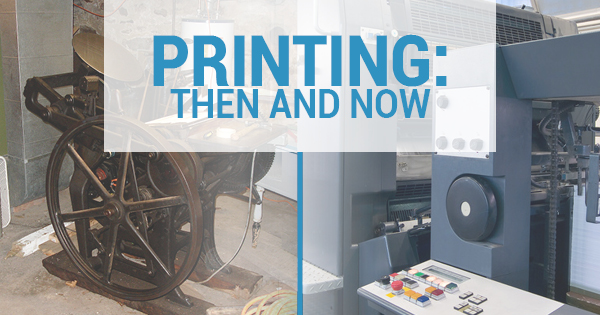
Printers are used by people all over the world on a daily basis to complete a variety of quick and easy tasks. But printers haven’t always been as light and speedy as they are now. Throughout history, printers have increased in speed and quality while decreasing in price and size. If you’re wondering how printing methods have evolved over time, this article takes a closer look at some of the key developments in the printing industry.
Gutenberg Printing Press: The printing press is considered to be the most profound invention of the printing industry. A goldsmith named Johann Gutenberg invented it in Germany in 1439. The invention of the printing press revolutionized the speed of printing, although they still had to be manually operated.
Steam Printing Press: In the late 1800s, a press made completely of cast iron was constructed and changed the design of the original printing press. The force needed to print was reduced by about 90% while also doubling the print size. The steam printing press only produced about 250 prints every hour, and it wasn’t until 1814 that printing was first done automatically.
Photocopiers: The first photocopiers were invented in the 1940s. Chester Carlson and a team of researchers created the process of producing copies, which was called xerography. This lead to the creation of the Xerox corporation, where the first Xerox machine was constructed. It wasn’t until 1959 that the first automatic photocopier was developed. This model took 15 seconds to warm up and then seven more seconds between copies.
Laser Printers: The first mass-produced laser printer hit the shelves in 1984. Contrary to today’s laser printers, which can shoot-out 200B/W ppm, the first laser printer could only shoot-out 8 ppm. While the laser jet has always been favored for its speed and high-quality printing, the most innovative aspect of this printer was its quiet operation, which was very unlike other noisy printers on the market.
Fax Machines: Similar telecopier technology has been around since the 1800s, but modern fax machines made their debut in the 1970s. Xerox developed the first laser, plain-paper fax machine in 1975. With its six-minute transmission time, the bulky machine could produce prints with a resolution of 96 x 96 pixels. Compared to this huge and slow machine, modern day fax machines can send faxes, complete document scanning, make copies, and also operate as a printer. New fax machine technology is faster, smaller, and can print at a much higher quality.
Digital Photo Printers: In 1991, digital printing began in order to produce large, high quality prints. Graham Nash, a key figure in this type of printing, was one of the founding members of the British rock band Crosby, Stills, Nash and Young. During the 1990s, Nash Editions produced the band’s large posters and prints. In 1989, the first true digital art printer was developed. It was basically a large-scale inkjet printer that used ink that had a poor lifespan. Today, oversized printing of digital photos can be printed at high qualities, faster speeds, and lower costs.
The printing industry has drastically changed over time, but it still remains a popular method of producing material. While many things have gone digital nowadays, printed materials are still widely used. In fact, seeing as how digital material can be skimmed in about 15 seconds, people tend to be more engaged with printed material. The printing industry is continuing to evolve, with things like 3D printers, and it’s hard to imagine where printing innovations will take us next.
